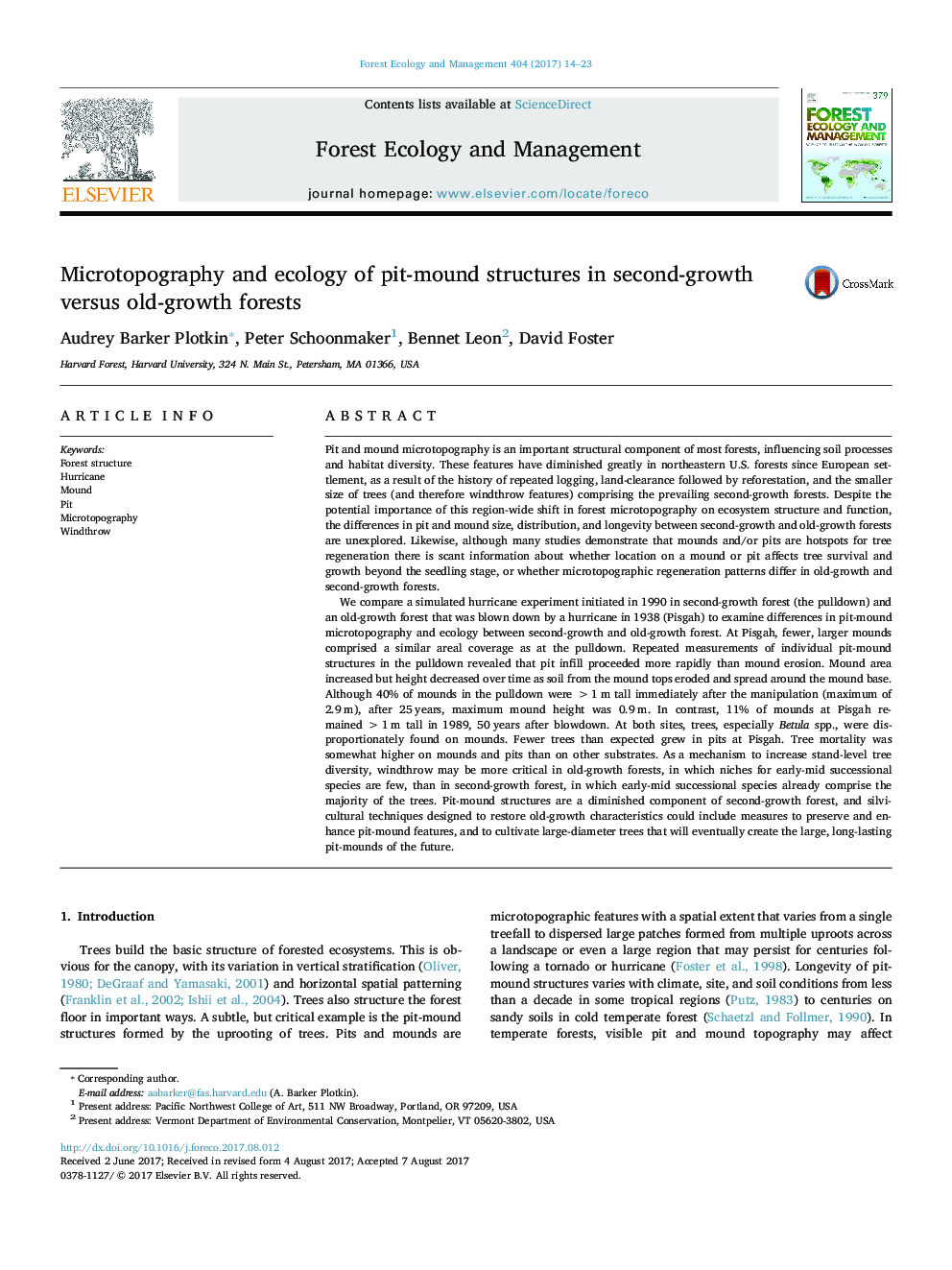| کد مقاله | کد نشریه | سال انتشار | مقاله انگلیسی | نسخه تمام متن |
|---|---|---|---|---|
| 6459134 | 1421354 | 2017 | 10 صفحه PDF | دانلود رایگان |
- Pit and mound microtopography is an important structural component of forests.
- Old-growth & second-growth pit-mound structure differs mainly in size and persistence.
- Early- and mid-successional trees were disproportionately found on mounds.
- Mounds are more important to tree diversity in old-growth than second-growth forest.
- Tree mortality was somewhat higher on mounds and pits than on other substrates.
Pit and mound microtopography is an important structural component of most forests, influencing soil processes and habitat diversity. These features have diminished greatly in northeastern U.S. forests since European settlement, as a result of the history of repeated logging, land-clearance followed by reforestation, and the smaller size of trees (and therefore windthrow features) comprising the prevailing second-growth forests. Despite the potential importance of this region-wide shift in forest microtopography on ecosystem structure and function, the differences in pit and mound size, distribution, and longevity between second-growth and old-growth forests are unexplored. Likewise, although many studies demonstrate that mounds and/or pits are hotspots for tree regeneration there is scant information about whether location on a mound or pit affects tree survival and growth beyond the seedling stage, or whether microtopographic regeneration patterns differ in old-growth and second-growth forests.We compare a simulated hurricane experiment initiated in 1990 in second-growth forest (the pulldown) and an old-growth forest that was blown down by a hurricane in 1938 (Pisgah) to examine differences in pit-mound microtopography and ecology between second-growth and old-growth forest. At Pisgah, fewer, larger mounds comprised a similar areal coverage as at the pulldown. Repeated measurements of individual pit-mound structures in the pulldown revealed that pit infill proceeded more rapidly than mound erosion. Mound area increased but height decreased over time as soil from the mound tops eroded and spread around the mound base. Although 40% of mounds in the pulldown were >1 m tall immediately after the manipulation (maximum of 2.9 m), after 25 years, maximum mound height was 0.9 m. In contrast, 11% of mounds at Pisgah remained >1 m tall in 1989, 50 years after blowdown. At both sites, trees, especially Betula spp., were disproportionately found on mounds. Fewer trees than expected grew in pits at Pisgah. Tree mortality was somewhat higher on mounds and pits than on other substrates. As a mechanism to increase stand-level tree diversity, windthrow may be more critical in old-growth forests, in which niches for early-mid successional species are few, than in second-growth forest, in which early-mid successional species already comprise the majority of the trees. Pit-mound structures are a diminished component of second-growth forest, and silvicultural techniques designed to restore old-growth characteristics could include measures to preserve and enhance pit-mound features, and to cultivate large-diameter trees that will eventually create the large, long-lasting pit-mounds of the future.
Journal: Forest Ecology and Management - Volume 404, 15 November 2017, Pages 14-23
